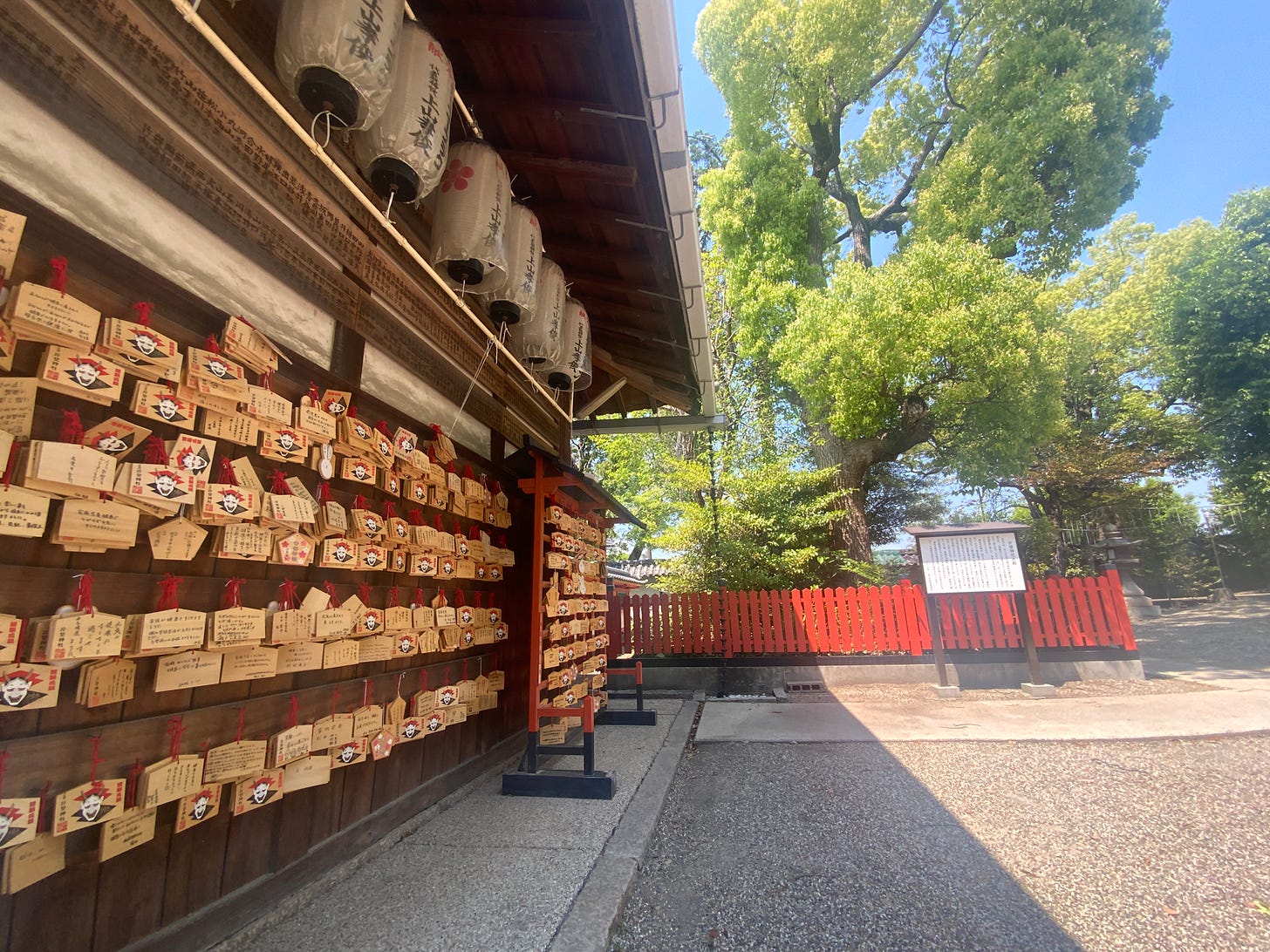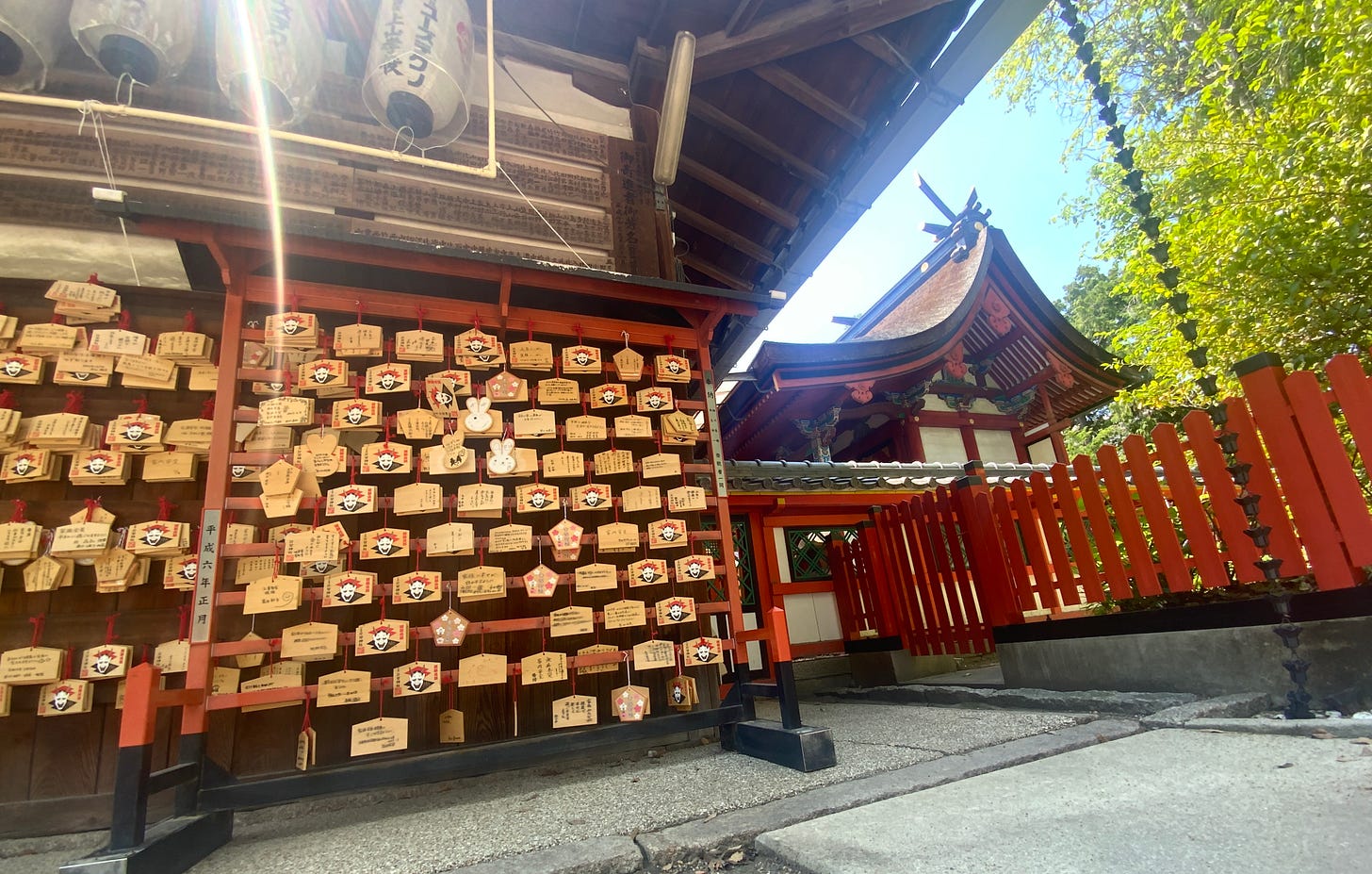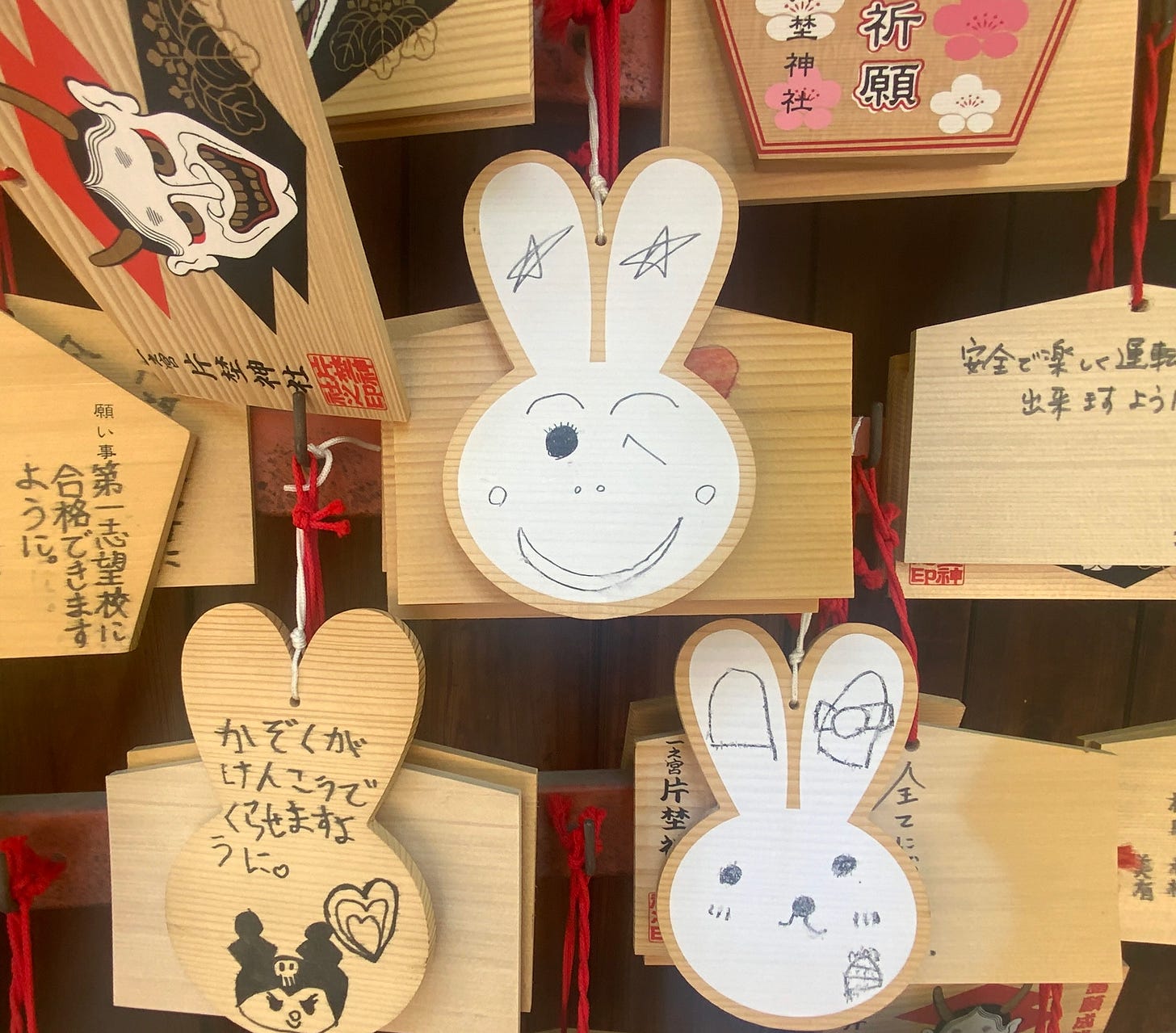A Simple, Profound Question
Last week, a student at Kansai Gaidai University asked me something simple, yet unforgettable:
“If I write my prayer in English, will the kami still understand it?”
I had been invited to speak about Shinto in one of the world’s only English-language university courses on the subject, taught by Professor John Schultz. I had come prepared with notes and anticipated questions—but this one caught me off guard. It was both innocent and profound.
In this essay, I want to explore that question:
Can kami read foreign languages?
What is the role of written words in Shinto?
And what happens when our hopes are tied with string and left to sway in the breeze?
What Is an Ema?
If you've visited a Shinto shrine in Japan, you may have seen a small wooden plaque hanging alongside hundreds of others, gently swaying in the wind. These are called ema—about 15 by 10 centimeters, often adorned with auspicious images and the name of the shrine. On the blank side, visitors write personal wishes, then hang them in a designated area.
Ema can be received by anyone—local or tourist—by offering a small donation, typically 500 to 1,000 yen. Writing a wish is an open invitation. No rituals, no credentials, no required beliefs.
And no required language.
Why Is It Called “Ema”?
The word ema(絵馬)literally means “picture horse.”
In ancient times, people offered live horses to shrines as sacred gifts. Horses were believed to carry the kami—or to be kami themselves. But horses were expensive, so people began offering painted images of horses instead. Over the centuries, these paintings evolved into the small wooden ema we see today.
Nowadays, ema may feature zodiac animals, local deities, or even famous historical figures—like Sugawara no Michizane, the deified “kami of scholarship” beloved by students.

When Ema Rustle and Kami Wander
There is something quietly moving about the sound of ema clicking together in the wind. Especially in spring or early summer, when the breeze is soft and the sunlight slants just so, I sense the presence of the kami in that gentle rustle.
As a priest, I spend every day at the shrine. But like anyone, I also enjoy walking outside. I sense that the kami, too, are wanderers—curious beings who slip beyond the shrine’s walls to stroll through the world. They are not bound by borders, nor limited by time. (Because kami are not physical entities, their absence leaves no emptiness.) The shrine is a home: the place they always return to.
And I imagine this: the kami returning with a gentle “I’m home,” brushing past the ema rack and making the wooden plaques softly rattle.
Perhaps, when the spiritual resonance within the written wishes echoes in harmony with the kami’s own spirit—
that is the moment when a wish comes true.

Shinto and the Power of Words
Unlike religions with sacred scriptures translated into dozens of languages—like the Bible or the Qur’an—Shinto has no single text. Its prayers (norito) are recited in ancient Japanese, and the kami are often deeply local. You might assume they only “understand” old Japanese words.
But Shinto treats language differently. For over a thousand years, its ritual language has remained largely unchanged. In this tradition, writing holds spiritual power.
To write a hope or a prayer is not just to say it—it is to shape it. To draw it one step closer to becoming real.
In the anime Kamisama Kiss, a high school girl unexpectedly becomes a land deity and gains the power to bind beings through written spells. Though fictional, it reflects a real cultural belief: that words possess kotodama, the sacred spirit within language. Writing, in this sense, is a gentle kind of spell—a self-made prayer in physical form.
A Letter to the Divine—and a Spell for the Self
When you write a wish on an ema and hang it where the kami might pass by, you are doing two things:
offering a message to the divine,
and anchoring your intention in the world.
“May I pass the university entrance exam.”
“May I find a wonderful partner.”
“May my loved one heal.”
These hopes, once written, take up residence in sacred space.
Does this make them come true? Perhaps.
At the very least, the act increases the chance of a “meaningful coincidence.”
And that, I think, is something Japanese people instinctively love:
small rituals that nudge reality toward beauty.

So—Does the Language Matter?
In truth, no.
What matters is not the language you use, but the purity of intention behind the words. The spiritual force within your writing—the sincerity and the clarity is what the kami respond to.
Whether you write in English, Spanish, Swahili, or Japanese,
what reaches the kami is not the grammar but the grace.
Modern Wishes, Ancient Voices
A student once asked me another question:
Why are norito—the sacred prayers recited by Shinto priests—never spoken in modern Japanese?
If ema can be written in any language, why must priests use only ancient words, known as yamato-kotoba?
This apparent contradiction lies at the heart of Shinto’s relationship with language, time, and ritual.
I’ll explore it in my next post.







Truly, truly beautiful... in heart, mind... and word.
Thank you for beginning this journey to share your experiences, thoughts, and feelings with this beautiful path. I, for one, love how you put things so beautifully into words for us who, for the moment, can only really read English! <333
So wonderfully written and very true ! 🙏